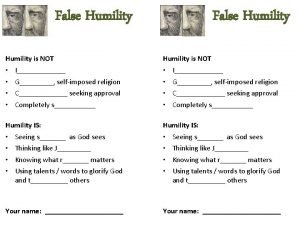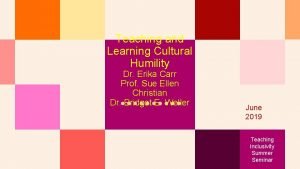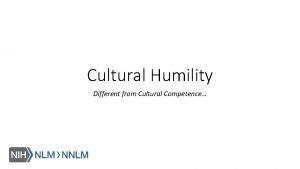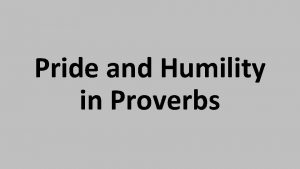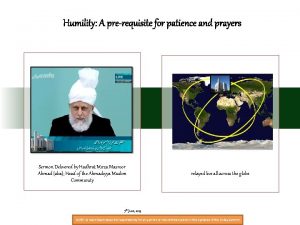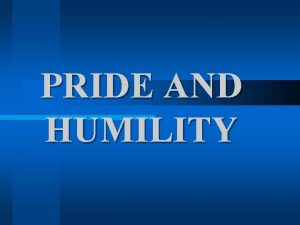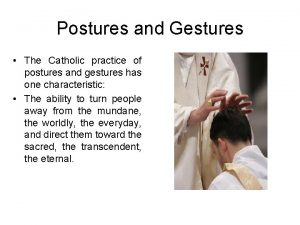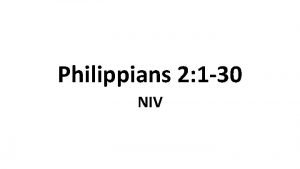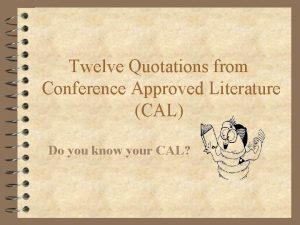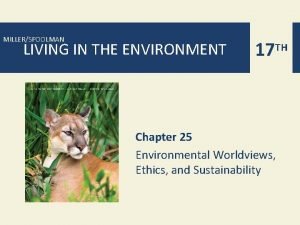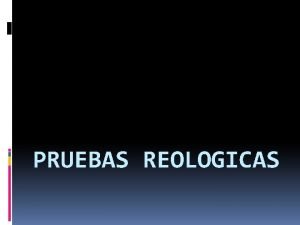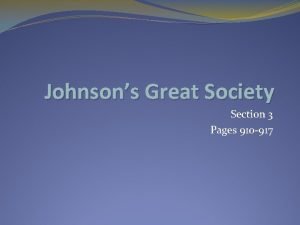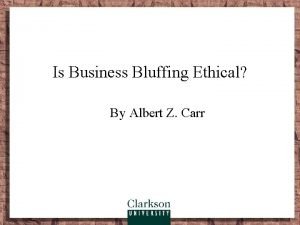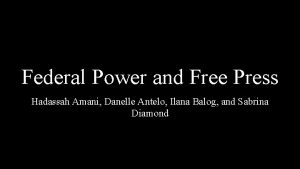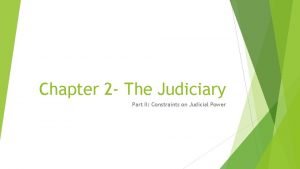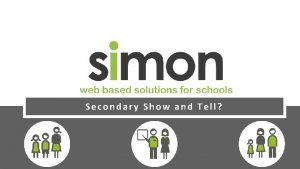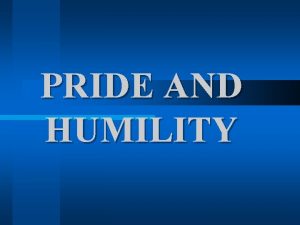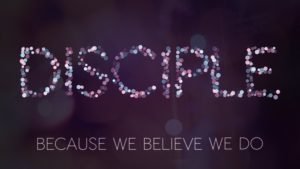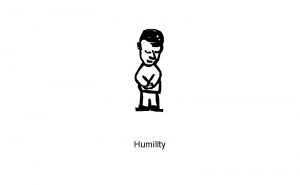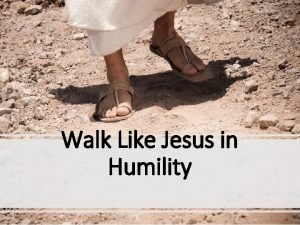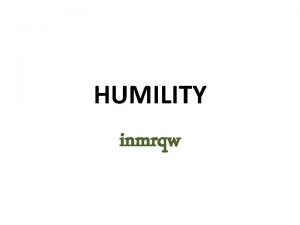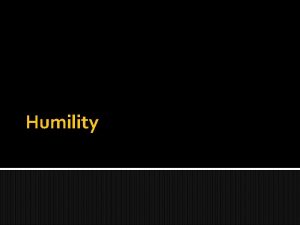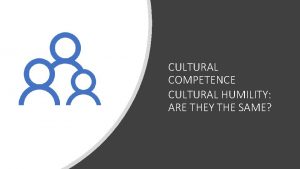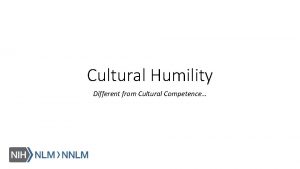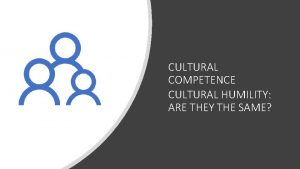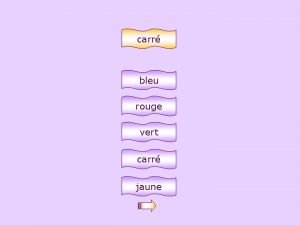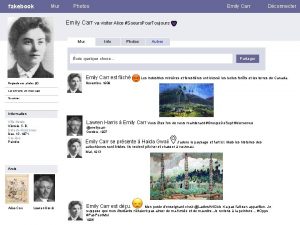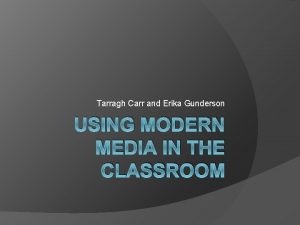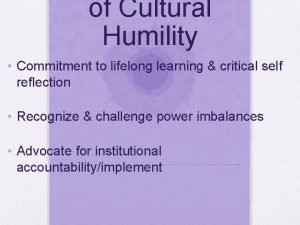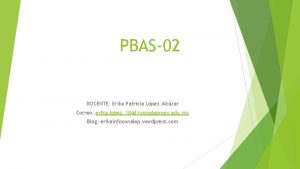Teaching and Learning Cultural Humility Dr Erika Carr


























- Slides: 26

Teaching and Learning Cultural Humility Dr. Erika Carr Prof. Sue Ellen Christian Dr. Bridget E. Weller June 2019 Teaching Inclusivity Summer Seminar

Cultural Humility Principles Dr. Erika Carr Pre-College Programming

Overview • • Purpose Community Expectation Cultural Humility Overview & Brief Discussion Connecting Cultural Humility to Youth Outreach Work

Community Expectations • Confidentiality • Honesty • Challenge & Support • Put yourself out there, challenge yourself • Support each other “The truth may set your free, but first it will shatter the safe, sweet way you live” – Sue Monk Kidd

Discussion • What does CULTURAL HUMILITY mean? • What about the other words: Inclusion, Cultural Competence, Diversity, etc. ? • The Evolution of Language: • “The language we use to categorize one another racially is imperfect… The original creation of racial categories was in the service of oppression. Some may argue that to continue to use them is to continue that oppression, ” (Tatum, 1997). • “Language is power, life and the instrument of culture, the instrument of domination & liberation” (Angela Carter)

Cultural Humility Definitions • “Cultural humility is a lifelong process of self-reflection and selfcritique whereby the individual not only learns about another’s culture, but one starts with an examination of her/his own beliefs and cultural identities, ” (Tervalon & Murray-Garcia, 1998). • “A process of self-reflection and discovery in order to build hones and trustworthy relationships, ” (Yeager, K. A. & Bauer. Wu, S. , 2013).

Cultural Competence VS. Cultural Humility CULTURAL COMPETENCE • Group Traits • Minorities of ethnic and racial groups • Immigrants and minorities follow traditions • Majority is the normal • Promotion of stereotyping • Differences based on group identity • Competence/expertise as an endpoint CULTURAL HUMILITY • Unique to individuals • Different combinations of ethnicity, race, age, income, education, sexual orientation, class, abilities, etc. • Everyone follows traditions • Power differences exist and must be recognized and minimized • Promotion of respect • An ongoing life process • Flexibility/humility

Activity: Intersecting Identities Describe yourself using Johnson’s (2003) Diversity wheel. What identities are most salient to you? How do they intersect?

Points of Oppression & Points of Privilege

The Point of Understanding the Oppressive System “If we tell ourselves that the only problem is hate, we avoid facing the reality that it is mostly nice, non-hating people who perpetuate racial inequality. ” -Ellis Cose, 1997

Why are these concepts important to my work and youth outreach work? • If you want to do meaningful work in the community you must build authentic relationships with individuals in the community • Authentic relationships can only be created if you have both an understanding of the community as well as a humbleness to know you will make mistakes and ability to self-reflect and self-critique those mistakes so you can grow • You must have the courage to make those mistakes and then get back up and keep working

Closing Thought • “The paradox of education is precisely this – that as one begins to become conscious one begins to examine the society in which he is being educated. The purpose of education, finally is to create in a person the ability to look at the world for himself, to make his own decisions, to say to himself this is black or this is white, to decide for himself whethere is a God in heaven or not. To ask questions of the universe, and then learn to live with those questions, is the way he achieves his own identity. But no society is really anxious to have that kind of person around. What societies really, ideally, want is a citizenry which will simply obey the rules of society. If a society succeeds in this, that society is about to perish. The obligation of anyone who thinks of himself as responsible is to examine society and try to change it and to fight it – at no matter what risk. ” -James Baldwin

References Johnson, A. (2006). Privilege, Power, and Difference 2 nd ed. Mc. Graw-Hill: NY, NY. Tatum, B. (1997). Why are all the Black Kids Sitting Together in the Cafeteria. Basic Books: NY, NY. Tervalon, M. & Murray-Garcia, J. (1998). Cultural humility versus cultural competence: A critical distinction in defining physician training outcomes in multicultural education. Journal of Health Care for the Poor and Underserved, 9 (2), pp. 117 -125. Yeager, K. A. & Bauer-Wu, S. (2013). Cultural humility: Essential foundation for clinical researchers. Applied Nursing Research, 26 pp. 251 -256.

Thoughts from & for the Classroom Prof. Sue Ellen Christian School of Communication

Mindset vs. Knowledge • Cultural humility is not cultural competence. • One is a dynamic process involving empathy & listening. • The other is about educational attainment of knowledge & skills.

Faculty Mindset • Lifelong learning/learn from others • Awareness of power structures • Respect for thoughtful POV

Faculty Mindset: Lifelong Learning • Awareness & Self-reflection • Be comfortable with not knowing • Ongoing engagement; we never “arrive”

Faculty Mindset: Awareness of Power Structures • Avoid assumptions; clarify who is talking to whom about what • Various authorities; students as authority on their lived experiences • Clarify roles: Faculty as content expert, classroom management

Faculty Mindset: Respect for Thoughtful POV • Seek universal; celebrate differences • Identify intent of a statement; acknowledge impact of it • Different people understand the same message in different ways

Free Yourself • No need to “figure them out” • Is this the appropriate setting and time for this discussion? • Release the myth of one truth* *= See Chimamanda Ngozi Adichi. (2009). The danger of a single story. Ted. Global.

Establish Humility Early • Syllabus & first day* • Rules of engagement** • Ongoing diverse examples * = Include diversity statement & use first person. ** = Create/use a classroom contract

Be patient with yourself SOURCE: Hogan, 2013.

REFERENCES • Hogan, M. (2013). Four skills of cultural diversity competence: A process for understanding and practice (4 th Ed. ). Belmont, CA: Brooks/Cole. • Tervalon, M. , & Murray-Garcia, MJ. (1998). Cultural humility versus cultural competence Journal of Health Care for the Poor and Underserved, 9(2), 117 -125. • Mosley, J. (2017). Cultural Humility. TEDx West. Chester Talk.

Creating Safer Classrooms Dr. Bridget E. Weller School of Social Work

REFERENCES Kang HK, O’Neill P. Teaching Note— Constructing Critical Conversations: A Model for Facilitating Classroom Dialogue for Critical Learning. J Soc Work Educ. 2018; 54(1): 187 -193. Vogelsang JD, Mcgee S. Handbook for Facilitating Difficult Conversations in the Classroom. Prepared by Classroom. 2015: 1 -8. Mensah FM. Preparing for Discussions on Race and Racism: The Critical Voices in Teacher Education Course. Teach Coll. 2016: 1 -19.

Questions? erika. carr @wmich. edu sueellen. christian @wmich. edu bridget. weller @wmich. edu
 False humility
False humility Cultural humility ted talk
Cultural humility ted talk Fnha cultural safety and humility
Fnha cultural safety and humility 3 principles of cultural humility
3 principles of cultural humility Trans umbrella
Trans umbrella Proverbs about pride and humility
Proverbs about pride and humility Requisite humility definition
Requisite humility definition Trò chơi âm nhạc
Trò chơi âm nhạc Genuflect
Genuflect Clothe yourselves with humility
Clothe yourselves with humility Unity through humility
Unity through humility Benefits of having a pure heart
Benefits of having a pure heart Philippians 2:1-30
Philippians 2:1-30 The highly capable individual.
The highly capable individual. Humility prayer aa
Humility prayer aa Biosphere 2 a lesson in humility
Biosphere 2 a lesson in humility What is scaled down teaching
What is scaled down teaching Cuadro comparativo e-learning b-learning m-learning
Cuadro comparativo e-learning b-learning m-learning Indice de carr y hausner
Indice de carr y hausner Baker v carr ruling
Baker v carr ruling Carr is business bluffing ethical
Carr is business bluffing ethical Hamish carr
Hamish carr Robert fletcher
Robert fletcher Maria carr
Maria carr Baker vs carr summary
Baker vs carr summary Reagen carr price
Reagen carr price Pam thomas carr
Pam thomas carr
